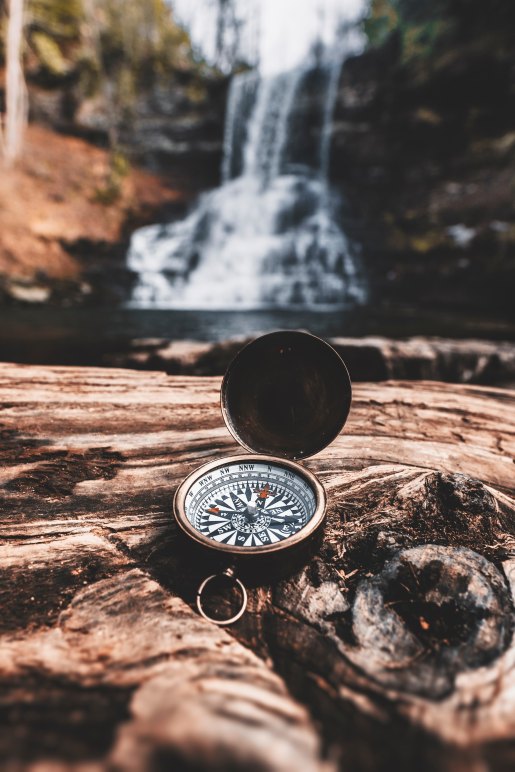
There’s no shortage of online writing advice. On the contrary, when I first decided to independently publish, I was swamped with such a flood of information that it was hard to find sure footing.
The terminology was tricky enough, let alone the specific strategies other independent authors discussed as I listened in and scrambled to figure out just what they meant by “broad” vs. “narrow,” rapid releases, Bookbub and so on.
I found myself wishing for simpler answers and asking myself: What do I actually NEED if I want to publish a book independently?
For those of you who’ve asked the same question, good news! Having independently published my first novel, I now have at least a little better grasp on the answer.
1. A (Finished) Manuscript
 If you’re thinking, “Kind of obvious, Anne,” I don’t disagree, but bear with me.
If you’re thinking, “Kind of obvious, Anne,” I don’t disagree, but bear with me.
Many writers who hope to be published are working on building their platform- i.e. a presence and influence that will help them sell books later on- without a finished manuscript in hand.
I’m not saying that a platform is a bad thing- in the saturated book market, it looks like you’ll need it! However, just remember that if you’re seriously pursuing publication, the finished, polished, as-perfect-as-possible manuscript is key.
It’s key if you’re going traditional, as you’ll be pitching that manuscript to literary gatekeepers who are inundated with stories.
It may be even more important if you’re going independent, as you’re going to be pitching it to the world without the benefit of a bigger name than your own backing you up.
2. Proper Interior Formatting

Ahhh formatting.
I thought that I was a decent typist and pretty good with formatting- until I learned how many things I didn’t know. (Things like the evilness of the Tab key- UGH!)
There are specific formatting rules that an independently publishing author must be familiar with- otherwise books might end up with words running off of the page, weird blank spaces, or all kinds of other unprofessional eyesores.
Thankfully, if you have a working knowledge of Microsoft, much of this is doable on your own, as I discovered when I created a classroom anthology for my 7th and 8th graders.
Depending on the format of your published work, you’ll have to know how to save it as a number of different types of files, too.
For instance, if you’re going to publish your story for Kindle, you’ll need to have it in a mobi file. If you want it readable on other types of devices, it’ll need to be an epub- because, in one friend’s words, “Kindle doesn’t play well with others.” 🙂
If you want your book published in paperback, it’ll need to be a properly formatted pdf document, but the cover will have to be a jpeg. (The Kindle cover will need to be jpeg too, but with different dimensions.)
Then there’s sizing to consider, spacing, this interesting publishing term called “bleed,” and making certain that the fonts you use aren’t under copyright…
Again, much of what you need to know is online, through KDP or other sites. However, this is an area where I was grateful to have the lovely and talented Amanda Ruehle on my side. An independently published author, editor, designer and formatter, she’s also much more tech saavy than I. She took my manuscript and turned it into a beautifully polished piece.
3. A Cover

You may have been told not to judge a book by it…but you know people will.
Whether you’re publishing an e-book or a paperback, a cover is the first thing readers see, and it’s an important marketing tool.
For those ready to dive into cover design there are do-it-yourself options, even for those of us without tons of image editing software. One example is KDP’s Cover Creator tool – it’s free and has different formats to choose from.
If you’re like me and discover that enjoying arts and crafts doesn’t make you a talented designer, you can hire cover designers for a wide range of prices- from under a hundred dollars to several hundred. (I know several people who have worked with designers through Fiverr and been pleased with the results.)
4. What About Money?

One of the appealing things about publishing through KDP is that (at least currently) it costs no money up front.
KDP runs on a royalty system. Authors receive a percentage of all ebook sales, and a percentage of all paperback sales after printing costs*. The percentages vary depending on just how and where books are sold, but that’s all detailed on their site.
There is also the option of featuring e-books on Kindle Unlimited. Rather than a royalty based on sales, the money KU takes in is divided among authors depending on how many pages of their manuscript get clicked on by subscribers.
So. Theoretically, you can independently publish a book with no cost apart from time.
5. Is That It?

Well, yes. And no.
After all, the beauty and challenge of going indie is that everything about the creation of your book is up to you.
EVERYTHING.
- Having beta readers and others to help you polish your work
- Hiring out, begging or bartering for editing services
- Finding places and people willing to do reviews (without breaking Amazon’s review policies…)
- Marketing the book
- Figuring out how publishing will affect your taxes
- Continue bullet points ad nauseum…
Add to all of these considerations this: according to a source cited on Kristen Lamb’s blog, one million books were self published last year.
One Million.
Lamb also pointed out in the post that these books didn’t have to go through traditional gatekeepers, (i.e. publishing houses, editors, etc) leading to a pretty huge range in quality.
Independent writers- that’s our challenge. The “needs” list for self-publishing really is quite short and easy to quantify.
But the details- the other steps that make our book a professional piece that stands out from the other 999,999,999 books-
Those take time. Effort. Stick-to-itivness.
If you’re willing to put those in, you’re well on your way.
Where are you in your writing journey? Looking to publish? Not interested in jumping down that rabbit hole yet?
Published authors- did I miss anything? What would you add to the list?
Wherever you are, I’m wishing you all the best!
Thanks for stopping by!
*Since printing costs come out of the cost for the paperbacks, KDP does set a “minimum selling price” for individual books. From there the author decides on a price for their book.



That is such useful information Anne – thank you for taking the time (which must be so precious to you) to share it with us. I love the new word too – Stick-to-itivness. I need reminding of that!
LikeLiked by 2 people
Thanks for the kind words- I’m glad to share anything that makes the piles of information a little less daunting!
I had to double check my spelling, but it’s one of my favorite words-that-might-not-exactly-be-a-word 😉
LikeLike
Ah, do you mean ‘favoUrite’ Anne? 🥴 (Depends on whether you’re writing American English or British English!)
LikeLiked by 1 person
Ha! Now I had to look up which was which, just to double check! (my editor caught a few places where I’d accidentally switched to British English in my MS- going back to source materials I suppose 🙂 )
LikeLike
Hi Anne – well done … and a useful post for many who are thinking of publishing their books – it’s making sure one is professional in all the aspects of it … love the ‘stick-to-itivness’ – clever word – cheers Hilary
LikeLiked by 2 people
Hi Hilary- I agree, professionalism is the key. With the process so accessible, the quality of the books really comes down to it.
And thanks- it’s a great word, isn’t it? 🙂
LikeLiked by 1 person
This would be very useful – IF I could figure out how to write the book in the first place! haha
LikeLiked by 2 people
Ha! That’s the trick! Though I think you might already have a pretty great non-fiction one if you compiled your blog posts… 🙂
LikeLiked by 2 people
You’re too kind.
(You stamp is now in a frame, but I have not spent the card yet.)
LikeLiked by 1 person
All good points, Anne. I learned a lot myself, and I’m still learning, especially about marketing as well as catching errors (it’s amazing how many can slip through, so the polishing part still holds true, and it seems to be easier to fix when books are print-on-demand).
LikeLiked by 1 person
Thanks Andrew!
Aaaaahhh marketing. 😛 That’s the scary stuff…
Don’t the errors drive you crazy? I correct other people’s papers for a living- and I STILL found one in the first chapter of my proof copy!
LikeLiked by 1 person
You’re welcome. Marketing’s always scary. As for errors, yes they do, but I’ve come to learn that they not only teach one to be patient as you gradually find and fix them, but they prove writers are human the same as anyone else. They’re far more common in published books than some people realize.
LikeLiked by 1 person
Marketing and formatting terrify me… I’m just starting that end of the journey, of needing to look at it!
LikeLiked by 1 person
Well, I know a great formatter 😉 Marketing…I’m right there with you, Jon!
LikeLike
We done list, Anne. I do all of my publishing through KDP now, too. It’s easy enough, just about my speed!
LikeLiked by 1 person
Thanks Jacqui!
LikeLike
Really useful stuff, Anne. It all sounds very daunting…just need to knuckle down, I guess..!
LikeLiked by 1 person
That’s it- AND, if possible, find people who’ve done it before. Having friends who’d gone through the process made it all seem more manageable!
LikeLiked by 1 person
book number 10 may be the big “thing”, so I guess patience is king.
LikeLiked by 1 person
Knuckling down is right! When I was submitting a proposal for a cover to a designer, she was asking for a specific page count.
I HAD NOT PUT TOGETHER THE FILE YET.
So, even if this stuff sounds obvious…know what? It ain’t. 🙂
Kickin’ article, my friend!
LikeLiked by 1 person
Ha! Riiiight, for the binding size. I wouldn’t have thought of that either- thank goodness for Amanda!
Thanks! It’s a big learning curve, especially the first time, but now…well, I still am not sure I know what I’m doing, but at least I know more than I did… 😀
LikeLiked by 1 person
Ditto, Anne. Diiiiiiitto 😉
LikeLiked by 1 person
It’s really daunting when you start but then again on the next one since it’s been a while from the last one, you forget what you did the last time. Doing header, footer, page number, page break and section break drive me crazy all the time.
LikeLiked by 1 person
Ha! That sounds familiar- especially the memory lapses from time to time! I was so grateful that Amanda took on the formatting, and it was STILL a headache because some things went all funky at the very end and I had to contact her when she was travelling and- argh! But, it’s certainly an exciting relief when it’s all done, isn’t it?!
LikeLiked by 1 person
It’s a great relief when it’s done. I’m amazed at how much knowledge I learned during the process. But then here comes marketing!
LikeLiked by 1 person
Yeah, that’s a whoooole different thing! Have you found any marketing venues you’ve liked? (If you don’t mind me asking 🙂 )
LikeLiked by 1 person
I liked Goodreads giveaway before they started charging a fee. Now and then I use BooksGoSocial. For ebooks, I like Smashwords better than Kindle. Except formatting for Smashwords is the worst! Their “meatgrinder” is a big pain in the neck.
LikeLiked by 1 person
Because formatting isn’t enough of a pain in the neck! 😀
Thanks for sharing these
LikeLiked by 1 person